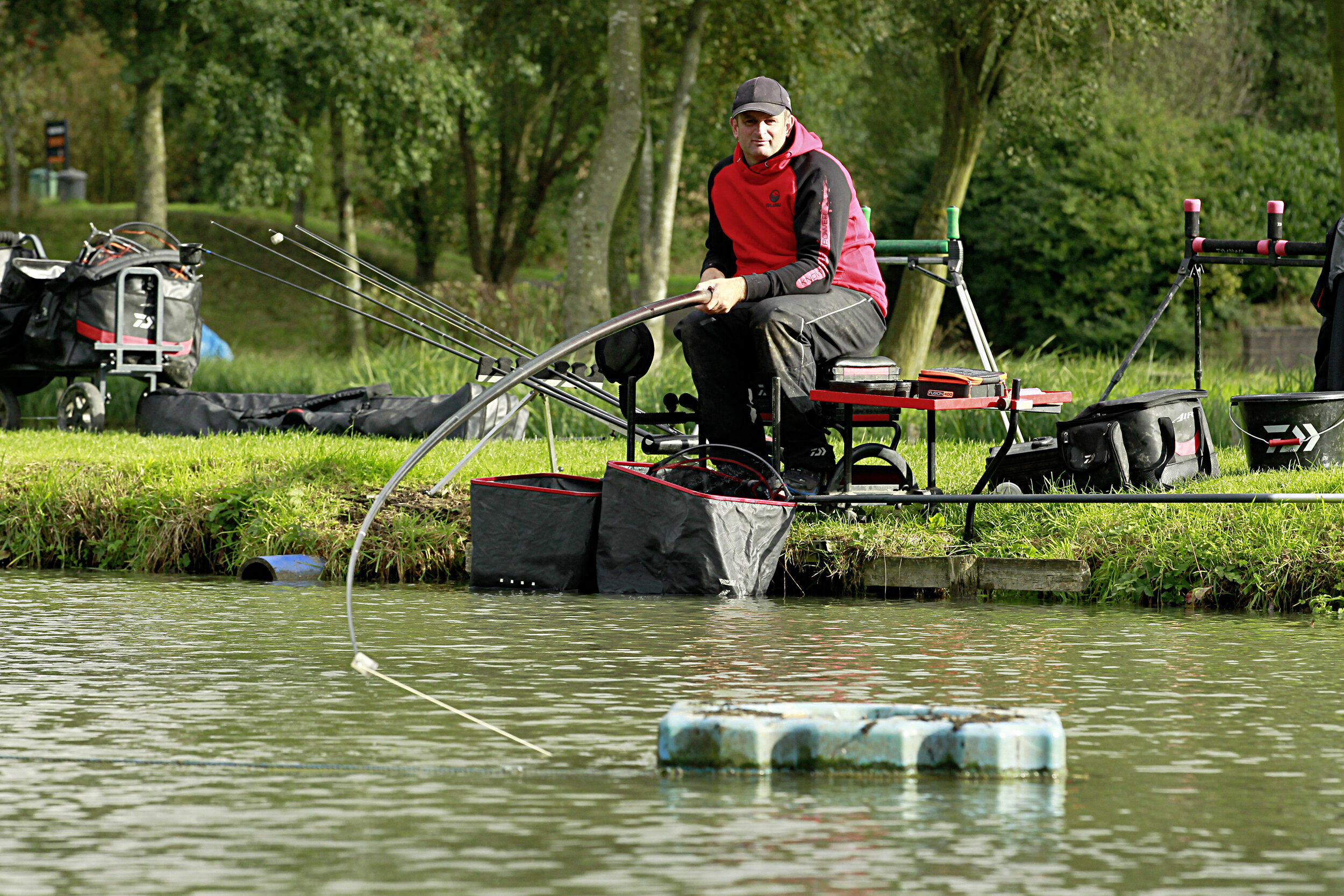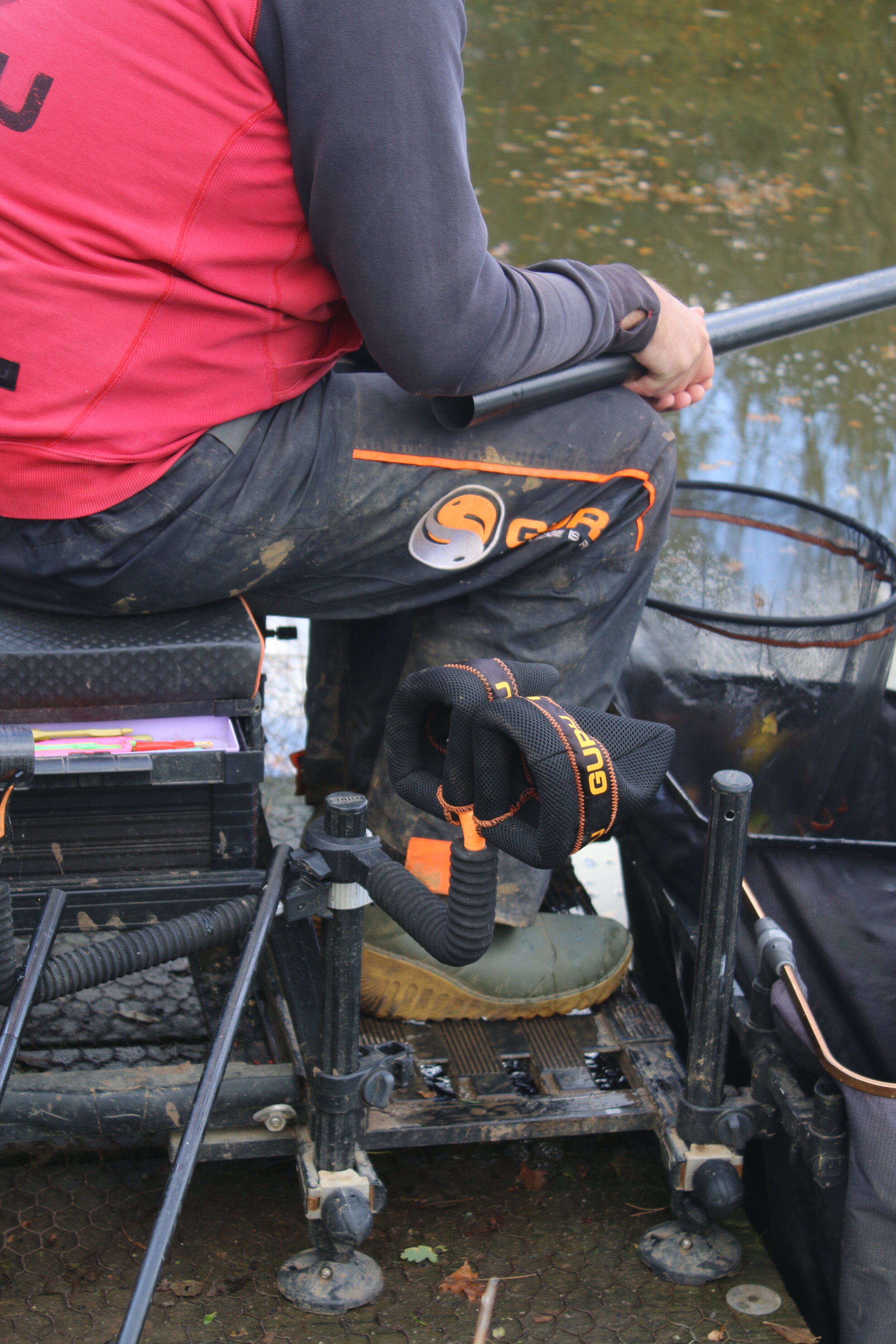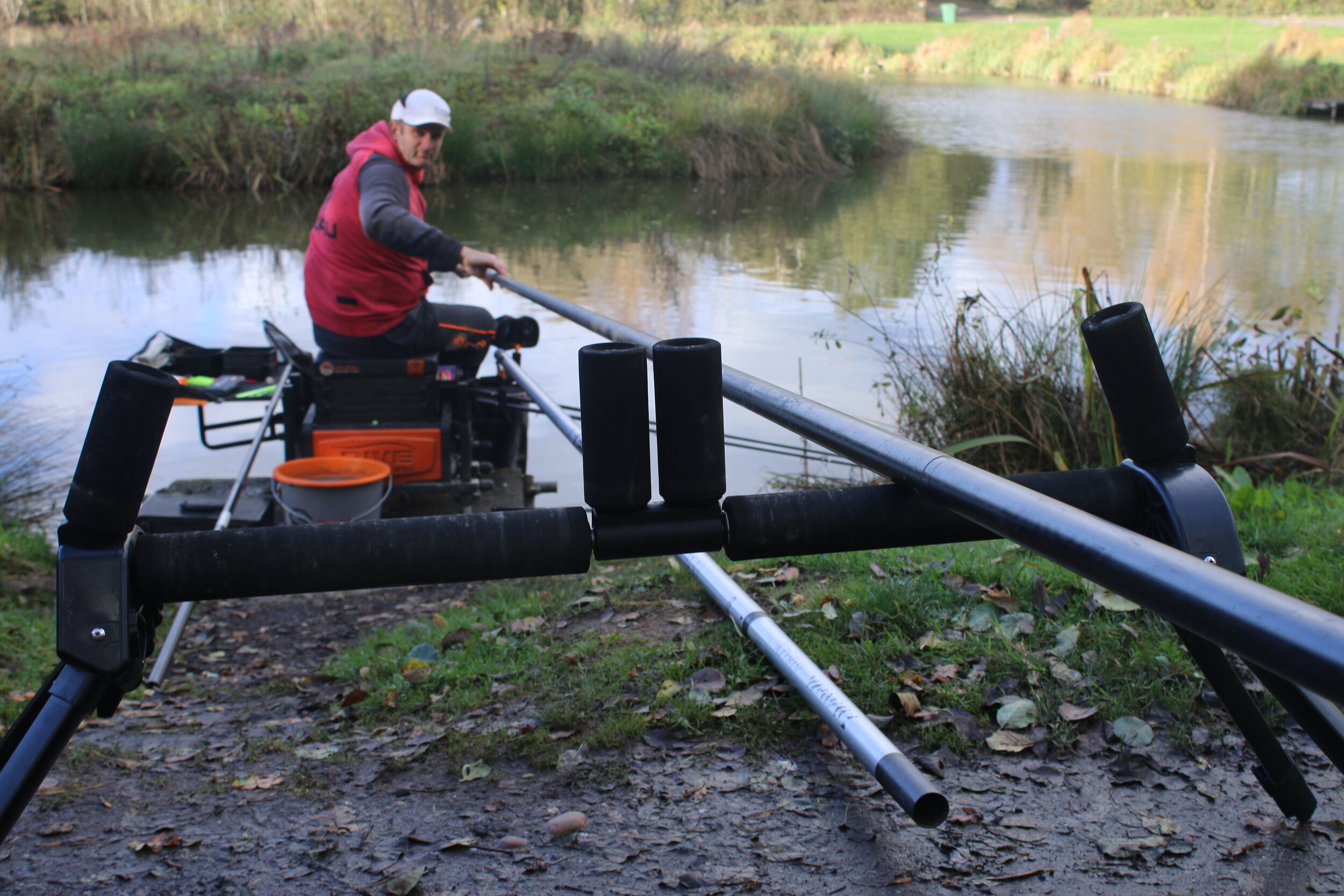Pole Fishing Tips | Set up to fish the long pole properly - Steve Ringer
WE ALL want to start fishing as soon as we can when arriving at a lake or river, but this rush to get set up can be detrimental for later in the session, especially when fishing the long pole. If you take your time to get organised properly, you’ll be more efficient and catch more fish!
This definitely applies to the long pole, a method that requires as much thought to how your seatbox and pole rollers are set up as it does to the rigs and baits on the other end. Fish with an uneven box that’s set too low down to the ground and it’s hard work.
Likewise, have your pole roller in the wrong position or at the wrong height and unshipping will become a real chore. Worse than that, you could end up breaking your pole. Getting set up properly is a good habit to get into and when done correctly, will allow you to become more machine-like with your fishing, working smoothly with everything in place and to hand.
If you take your time to get organised properly, you’ll be more efficient and catch more fish!
Get level!
Not getting your box level is a recipe for disaster and will give you backache! Make sure your feet are flat on the footplate and sit with your legs slightly to one side, resting the pole across your thighs. Your elbow will then rest on top of the pole.
Not getting your box level is a recipe for disaster and will give you backache!
How many rollers?
On flat banks, I’d use one roller for fishing up to 11m and two past this. If the bank behind you is steep, you can get away with one and use the bank as a second. I like to extend my roller legs fully so my rig is always in the water when shipping.
On flat banks, I’d use one roller for fishing up to 11m and two past this
Side tray height
Fix your side tray too low and you’ll always be reaching for feed or hookbaits, which will put you off balance. I want to simply reach off to one side and pick up bait or a catapult without taking my eyes off the float.
Fix your side tray too low and you’ll always be reaching for feed or hookbaits
Bump bars
These seem a good idea as they leave your hands free to feed. In windy weather they’re great, taking the strain of battling with 13m of pole off your back and also keeping the rig dead still. For pole fishing beginners, they’re a must.
For pole fishing beginners, bump bars are a must.
Commercial Fishing Tips | Catch more silvers on chopped worm - Steve Ringer
ALTHOUGH I think we’re past the window in the year when chopped worm works for big carp, where silverfish are concerned it’s still a vital bait to have to hand.
We all know perch love worms, but so do roach and skimmers. If I was fishing a venue with a real mix of fish in it, such as Lambsdown Lake at Meadowlands Fishery, worms would always play a part – not however, when fed on their own!
Instead, I try to combine worm with groundbait and other goodies like casters and dead pinkies. Few people can deny the pulling power of chopped worms. The juices that leak off pull fish in quickly, but this is a feed that you need to go steady with.
Feed too much and worms in cold water can put the fish off. By introducing only a small taster of finely-chopped dendra worms every time I feed on the pole, or cast a feeder, I’m in a position to work out how well the fish are responding, allowing me to increase or decrease the amount of feed.
Chopped worm is a vital bait for silvers in the colder months
RIDDLE OFF THE SOIL
I want worms soil-free. I’ll riddle off the bulk of the soil and then pop them in a tub. The worms will ball up, pushing off excess soil.
Riddle excess soil off your worms
MAKE A MUSH
How finely you chop worms is dictated by the size of fish I’m after. Big fish need a rough chop, but smaller fish need a minced-up mush.
For smaller silvers, try to create a worm mince
START WITH A PINCH
Bream love worms, but sometimes not in the cold. I’d start with just a pinch of choppie inside a ball of groundbait or in the feeder.
Just a pinch is enough to add attraction to groundbait
CHOP SOME CORN
I’m a big fan of the colour yellow for bream, so I’ll chop up some corn to add to the mix. This puts small flecks of colour into the swim.
Corn and worm is a deadly combination
Commercial Fishing Tips | Catch a big weight of perch with Steve Ringer
Over the last few years, one fish that’s really come to the fore on commercial fisheries up and down the country is the perch.
And I’m not talking about just catching the odd one either because weights in excess of 50lb of perch have been caught on some waters. That’s exceptional fishing in anyone’s book. In fact, big perch have become so important on some lakes that they have acquired their own nickname of MVPs (most valuable perch)!
That’s certainly true in matches when the carp aren’t really feeding and five or six big perch for 10lb-plus can make a big difference at the final whistle, but for pleasure fishing, I think targeting perch can be even more rewarding.
They grow to quite a fair size and can be caught on relatively simple tactics too, so there’s no need for you to break out the specimen-hunting gear to have the chance of netting a 2lb-plus fish!
When the carp aren’t really feeding, five or six big perch for 10lb-plus can make a big difference
Fish the margins
The best place to target perch on commercials is in the margins. They love to patrol the edges, and if your margins have a feature such as an overhanging tree, that’s even better. You want to be fishing in 3ft of water to catch large numbers of perch. In fact, the deeper the edge is, the better it will be.
The best place to target perch on commercials is in the margins
Top perch baits
Worms are a good bait for perch, but once the water temperature drops, maggots and casters are better. Double maggot is a decent-sized hookbait, and when the water is clear fishing one white and one red maggot makes a huge difference. The white maggot definitely gets you more bites.
Double maggot is a decent-sized hookbait
Strike hard!
Big perch have very hard, bony mouths. Setting the hook when perch fishing is key, so I use a slightly heavier elastic, Orange Hydro. You need to strike firmly – a gentle lift won’t cut it! You also need to be patient when the float goes under. Try and wait that extra second before striking.
Setting the hook when perch fishing is key
Feeding tips
Little and often is usually best, but I’ll try and give the fish an hour to settle. Starting feed is 10 to 15 maggots or casters every 90 seconds or so, which I then adjust accordingly once I’ve made the switch. If there are lots of small perch, I’ll up the amount I’m feeding to draw in some bigger ones.
Up the amount of feed to draw in some bigger ones















